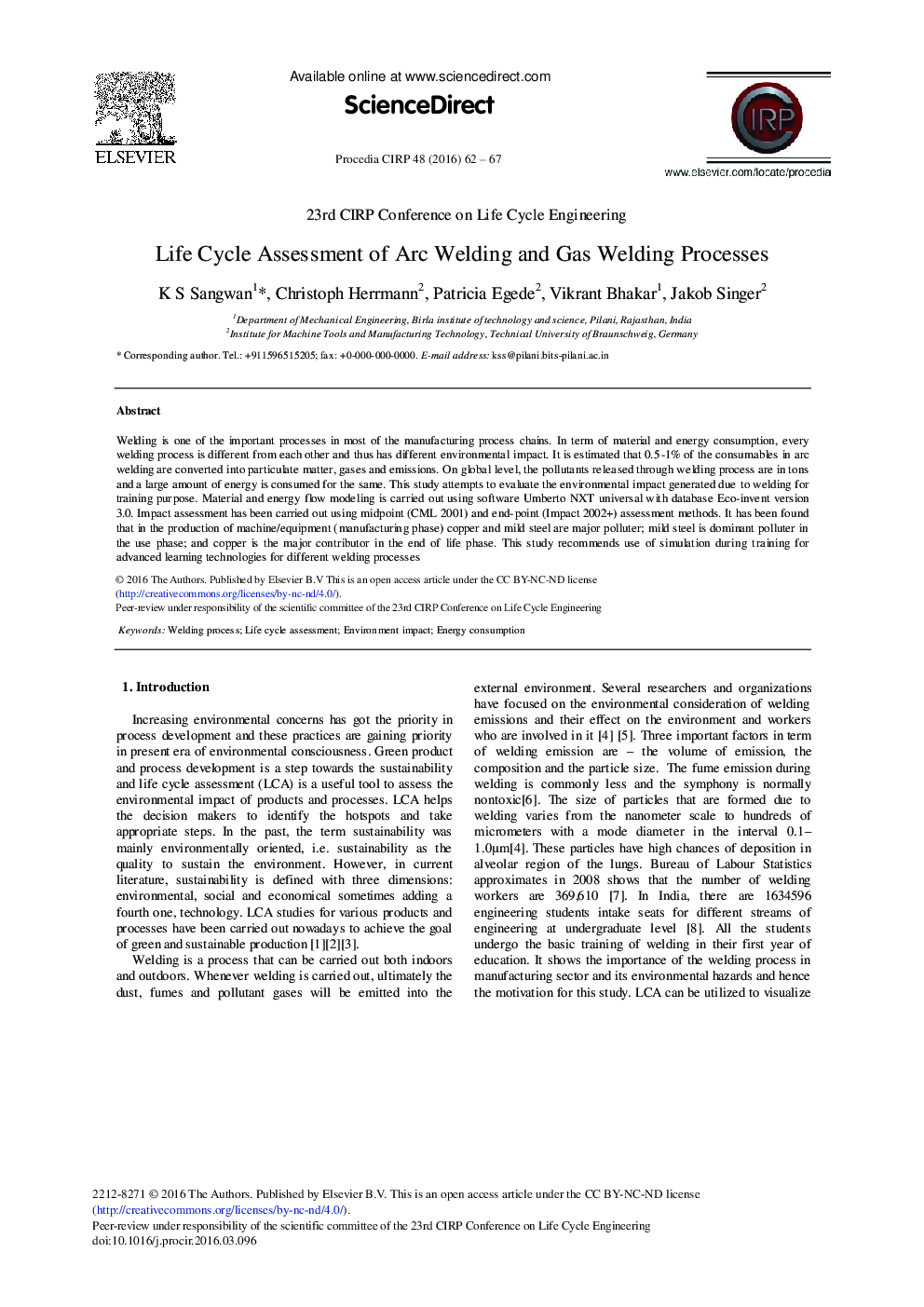| Article ID | Journal | Published Year | Pages | File Type |
|---|---|---|---|---|
| 1698647 | Procedia CIRP | 2016 | 6 Pages |
Welding is one of the important processes in most of the manufacturing process chains. In term of material and energy consumption, every welding process is different from each other and thus has different environmental impact. It is estimated that 0.5-1% of the consumables in arc welding are converted into particulate matter, gases and emissions. On global level, the pollutants released through welding process are in tons and a large amount of energy is consumed for the same. This study attempts to evaluate the environmental impact generated due to welding for training purpose. Material and energy flow modeling is carried out using software Umberto NXT universal with database Eco-invent version 3.0. Impact assessment has been carried out using midpoint (CML 2001) and end-point (Impact 2002+) assessment methods. It has been found that in the production of machine/equipment (manufacturing phase) copper and mild steel are major polluter; mild steel is dominant polluter in the use phase; and copper is the major contributor in the end of life phase. This study recommends use of simulation during training for advanced learning technologies for different welding processes.
